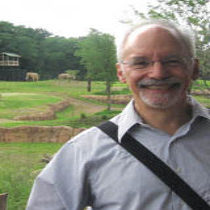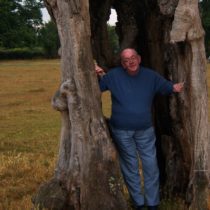Landscape Architecture for Landscape Architects › Forums › GENERAL DISCUSSION › landscape as playground?
- This topic has 1 reply, 4 voices, and was last updated 14 years, 5 months ago by
 Boilerplater.
Boilerplater.
-
AuthorPosts
-
November 26, 2009 at 8:16 pm #172197
 ncaParticipant
ncaParticipantHappy Thanksgiving!
Why is it that in elementary school site design you see so much emphasis on metal prefabricated playground equipment?
I grew up in Maine and had prefabricated play structures at the schools I went to, but we also had plenty of forest, rocks, water, hills, and trees to play in/with.
With neighborhood density becoming more compact and isolated from rambling wild areas for kids to play, especially in the west, I see a clear need for more landscape-based play areas, particularly around places where kids spend so much time-schools.
With my limited experience I wonder if there is a specific reason school districts or designers tend to opt for play structures and pre-planned play equipment and hard surface courts? Is it a cost or safety issue? Lack of understanding by the public?
The other thing that intrigues me is the (over) use of things like basketball courts, tether ball, four square etc in elementary sites.
I walked a few sites last week and had the opportunity of observing kids at play in some of these spaces. It was funny to see the majority of kids run for the play structure initially, then slowly begin to disperse to things like snowbanks, seat walls, and other ‘unplanned’ features.
It may be a huge leap in reasoning to think this, but it makes me wonder how growing up in these places affect childrens minds and imaginations. Then again, you have children growing up playing with dirt and rocks in other countries.
Thoughts?
November 26, 2009 at 8:38 pm #172204 BoilerplaterParticipant
BoilerplaterParticipantI beleive its largely due to the overly litigious society we have. The LAs want to shift liability over to the play equipment manufacturers, or their insurer requires them to do so. Schools also want play areas that are easy to police by teachers & aides. They don’t want places where kids can hide or where perverts & kidnappers might hide. Clear sight lines into the playground from nearby streets is also desired to minimize the chances of after-hours vandalism by older kids.
November 26, 2009 at 8:48 pm #172203 ncaParticipant
ncaParticipantUgh…
You’ve reaffirmed my suspicions. Things really need to change in this regard, imo of course.
I have some great landscape ideas for new site which I think all make sense and would be a blast and relatively safe from a kids standpoint, but have a sneaking suspicion it’ll all end up flat for the reasons you’ve mentioned. There must be some strategy for getting play landscapes implemented.
I know EDAW Fort Collins (Herb Schaal, Joe McGrane, Craig Russell) specialized in landscapes for kids with bridges, logs, tress, rocks, water, etc., and many were built over the years. I’m not sure if this has changed from a legal or cultural standpoint in recent years. I am just very disappointed in the educational landscapes (schools) I’ve seen recently, and some won awards.
It seems like the best thing we can do as LA’s in an elementary landscape is paint silly things on the apshalt.
November 27, 2009 at 11:30 pm #172202 ncaParticipant
ncaParticipantThanks Jim,
I agree that there are probably ways to create more exciting playscapes. It isn’t necessarily just aesthetics that concern me regarding prefab structures, but the limited utilization of the entire site these things encourage. It seems eay enough to cordon off a rectangle of pea gravel and drop a play structure in. It seems like landscape elements could be both more cost effective, exciting and more safe than a steel behemoth of play.
I remember when I was kid running around playing tag, capture the flag, kickball, army, or other imaginary games where my friends and I would use the entire natural landscape to run, climb, jump, etc. Play structures seem so prescribed and it just makes me wonder if there isnt a way to encourage kids to use their imagination a bit more in places where they go to learn and grow. I’m even thinking of how the outdoors can be used as better places to teach or incorporate physical finess programs and learning about the earth sciences.
I’m sure you’ve been through all of this in your own thought process. Maybe I’m naive to think theres a possibility in this, but I keep thinking back to EDAW Fort Collins projects, Joe McGrane and all the cool ‘playscapes’ they built and became reknowned for.
November 29, 2009 at 6:49 pm #172201 Rob HalpernParticipant
Rob HalpernParticipantI think what you are re-imagining is the Adventure Playground movement, that is so much more accepted in Europe than in the USA.
December 1, 2009 at 4:01 pm #172200 Rob HalpernParticipant
Rob HalpernParticipantAnd here’s a project that is “on the boards” in the US
http://www.hocm.org/page.php?id=149December 2, 2009 at 5:45 am #172199 ncaParticipant
ncaParticipantThanks Rob. Those are both great sources.
I have asked several experienced designers, including members here who have all deferred to the issue of liability and the decreased risk in specifying manufactured equipment…pretty disappointing, but some still say there is hope, you just have to be a bit more creative both with what you design and how you portray it in presentation.
I’ve seen the technique used before-‘ it’s not a bike ramp, it’s a berm with a sidewalk on top..’
The topics been discussed before as well- How can designers affect change and innovative design in such a litigous society? How can we expect our kids to understand the natural world with so much red tape?
December 3, 2009 at 5:04 pm #172198 Les BallardParticipant
Les BallardParticipantHere in the UK it isn’t just litigation folk are afraid of it is the Health and Safety Executive. Designers of playgrounds choose from ranges of play equipment, meeting points, courts, etc. used before or approved rather then liasing with a HSE person and starting from scratch. My heart is with you but, having seen a kid working on a new facility with his dad’s toolkit and other horrors – including surfaces that disappeared in a week afer a pitched battle between local youths – I can only hope that change can be effected slowly using “natural” facilities.
In school grounds trees and natural areas are often tended by the outsourced contractors for the local authority and they want an easy life, being unable to take on the concept for anything much. As outsourcing recedes – authorities are just starting to employ the people they need again – I think this will help but I know of a small memorial flower bed (to a pupil killed in an accident) that is hard enough to keep up.
I can come up with all sorts of ideas. We export trees to Italy where they are grown into stags and other things to be reimported and sold for thousands yet a decent bit of tree gardening on site seems impossible. It should be that every school has gardened or topiarised trees to make a climbing tree, outdoor holly classroom for a class or the choir to practice, fruits to eat and be used as a teaching aid (along with a few vegetables), examples of trees with their treated timber at different ages, a tree nursery for kids to take home and plant their own trees matched to them, a coppice as a teaching aid and wildlife lounge and so much more – but it does not happen. Schools continue to import every scrap of timber they use in lessons and otherwise and local authorities continue to import, rather than make at central points, every board they use. You don’t want me to go on, it isn’t nice but, you can all help change things by pushing and cajoling and following the spirit of Nick’s thread.
Luv n Lite,
Les Ballard
-
AuthorPosts
- You must be logged in to reply to this topic.

